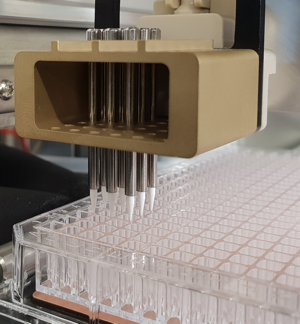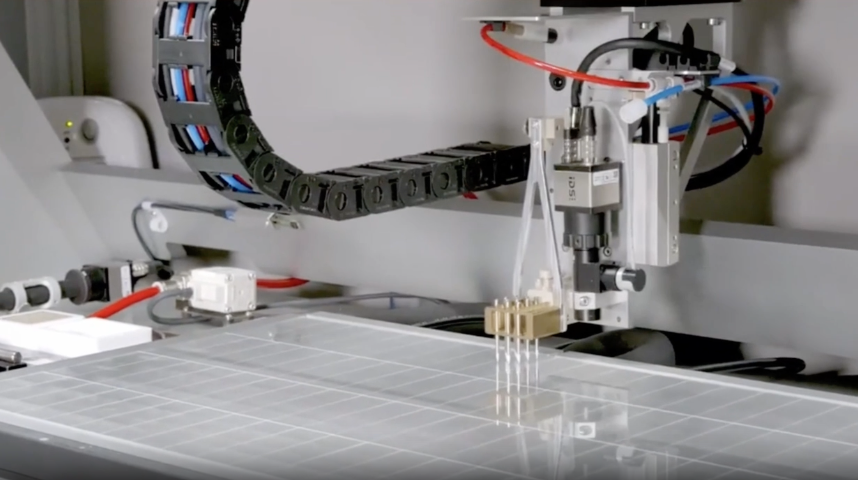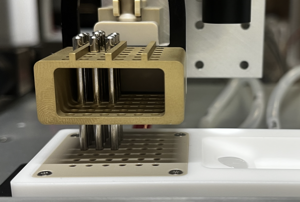Microarray Pin Spotter
Why pin spotters?
For microarray production, there are cases where non-contact spotting is not the optimal solution. When dealing with heterogeneous and viscous samples like cell lysates, a contact pin spotter truly excels. Additionally, when thousands of source samples need to be spotted, a large multi-print head is invaluable.
These two requirements come into play when Biobank samples need to be protein-profiled, using for example a reverse-phase protein array (RPPA) investigation approach.
M2 contact pin spotters
M2 Automation has significantly enhanced the pin spotting options, hardware, and software over the past few years, on its microarray contact spotters. We now offer various pin head formats that can also accommodate your existing pin inventory.
Additionally, M2 systems can interchange non-contact piezo and nanoliter dispensing, with contact pin spotting, on the same instrument.
The pin spotter can be as simple as a one pin precision dispenser for early prototyping (iFOUR), or carry a full pin head (on larger systems such as the iTWO or iONEs).


Contact Spotter Pin types:
In pin microdispensing, 2 general types exist: solid or blunt tip pins, and hollow or capillary pins.
— Capillary pins feature a hollow core and tapered ends, leveraging surface tension and adhesive forces for controlled liquid transfer. Their significant advantage lies in enabling several hundred depositions with just one uptake step.
— In contrast, blunt-end solid pins have flat tips, excelling in precise, direct contact dispensing. They are available in diameters ranging from 80 to 500 µm resulting in a precise deposition range of 0.5 to 30 nanoliters.
Capillary pins offer superior precision for small volumes, making them ideal for high-throughput applications, and blunt-end pins ensure consistent and direct liquid deposition. Both pin types have their place and contribute to the versatility required for a diverse array of microdispensing tasks. The liquid is aspirated into the pin using only the capillary force.
We offer both ceramic tips, for complete chemical inertness, as well as low cost steel pins, for less demanding applications.
In this video, a capillary pin with a tip diameter of 500 µm is “stamping” droplets of approx. 400 µm diameter onto a hydrophobic microscope slide. The dot-pitch is 500 µm.
3 capillary pins were used with pin diameters of 100 µm, 200 µm and 500 µm, printing a 9 x 9 array with a dot pitch of 500 µm each. The volumes are about 1 nL, 2 nL and 15 nL on a hydrophobic slide.
A special shoutout to INTER-ARRAY by fzmb GmbH, a close partner of M2-Automation, for their major influence on the further development of M2 pin spotting technology. The microarray pin spotting video shown was created by INTER-ARRAY. It shows the standard 36-pin head fitted with only 12 blunt-end pins. The pins have to be re-inked after each dispensing and washed after each sample change. The microdispensing instrument is an iONE-1200 which holds 140 slide sized targets on a vacuum table. The video is shown in fast motion at some points, but mostly in real time, especially the washes with the fast z motions.


